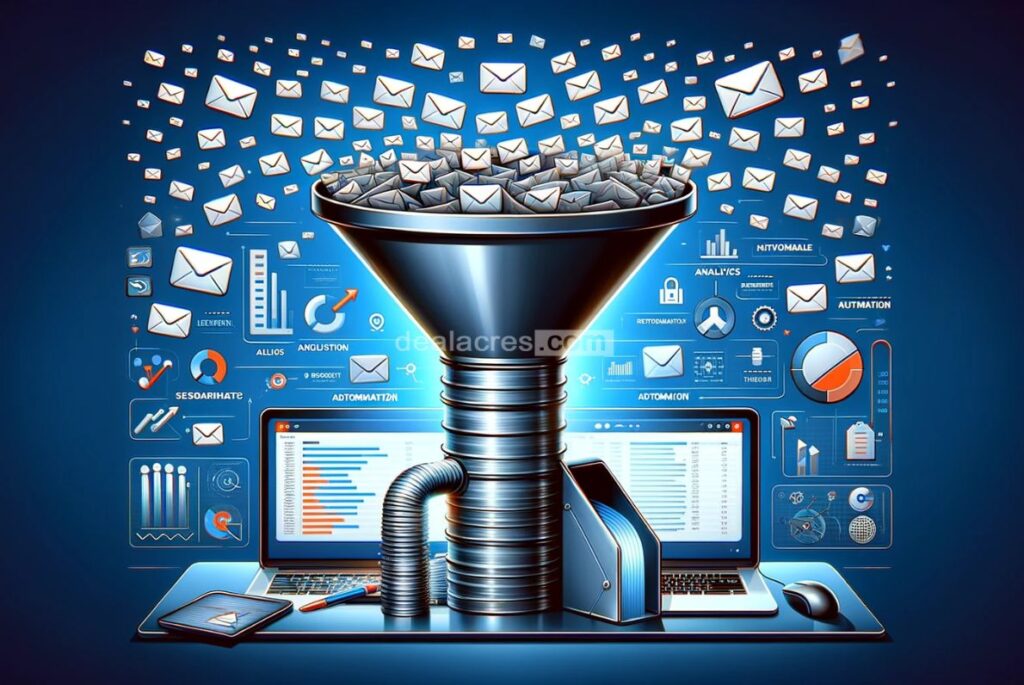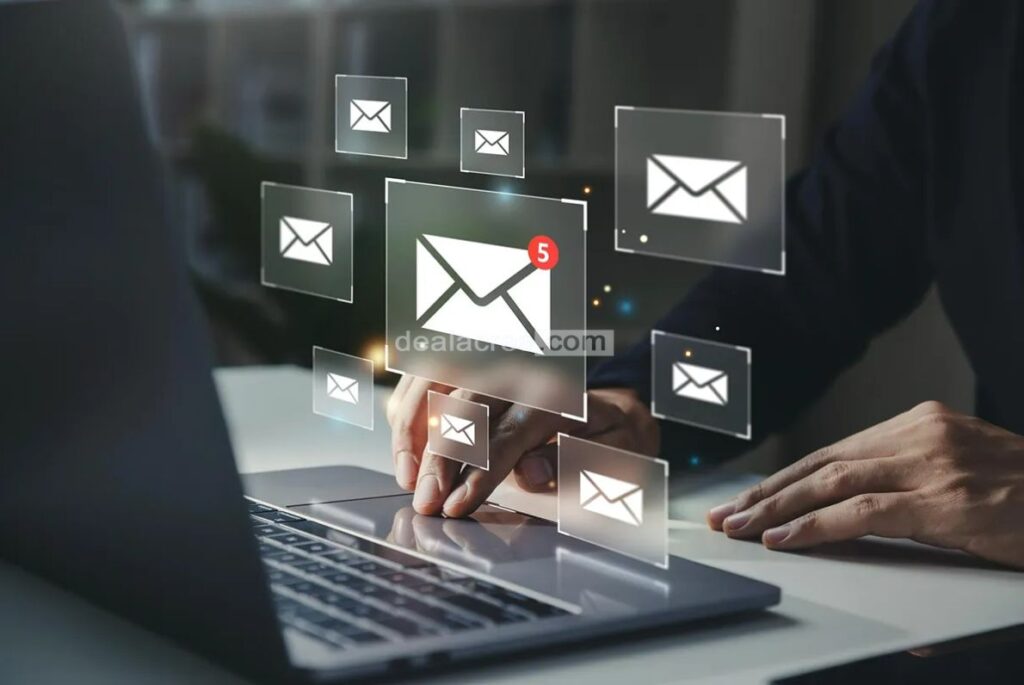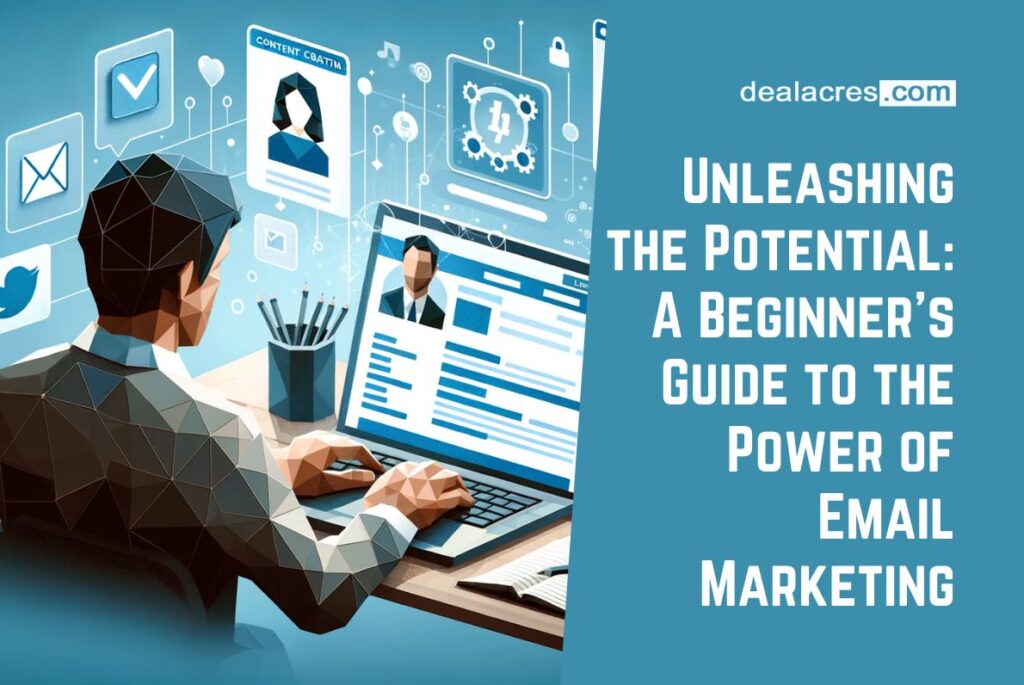Introduction
In the vast landscape of digital marketing, where trends come and go, one strategy has stood the test of time—email marketing. It’s not just about sending messages; it’s about building relationships, fostering customer loyalty, and driving meaningful engagement. In this comprehensive guide, we’ll explore the power of email marketing in easy and simple language. Whether you’re a small business owner, a budding entrepreneur, or someone eager to harness the potential of email campaigns, let’s embark on a journey to understand and master the art of effective email marketing.

Chapter 1: Understanding the Basics of Email Marketing
1.1 What is Email Marketing?
Email marketing is a digital marketing strategy that involves sending targeted messages to a group of people through email. It is a direct and personalized way to communicate with your audience.
1.2 Why is Email Marketing Important?
- Direct Communication: Reach your audience directly in their inbox.
- Personalization: Tailor messages based on customer preferences.
- Cost-Effective: Compared to other marketing channels, email is budget-friendly.
- Measurable Results: Track opens, clicks, and conversion rates for insights.
1.3 Types of Email Campaigns
- Newsletters: Regular updates, news, and content.
- Promotional Emails: Special offers, discounts, and product launches.
- Welcome Emails: Greet new subscribers and introduce your brand.
- Transactional Emails: Order confirmations, shipping notifications, and receipts.
Chapter 2: Building an Email List
2.1 Permission-Based Marketing
- Obtain consent before adding anyone to your email list.
- Use opt-in forms on your website and social media.
2.2 Creating Compelling Opt-In Incentives
- Offer value in exchange for email sign-ups.
- Examples: Discounts, free resources, exclusive content.
2.3 Segmenting Your Email List
- Divide your email list into segments based on demographics or behavior.
- Send targeted and relevant content to each segment.
Chapter 3: Crafting Compelling Email Content
3.1 Attention-Grabbing Subject Lines
- Keep it concise and intriguing.
- Use personalization and urgency when relevant.
3.2 Engaging Email Copy
- Write clear and compelling content.
- Use a conversational tone.
- Focus on benefits to the reader.
3.3 Incorporating Visuals
- Use images, infographics, and videos to enhance content.
- Ensure visuals are mobile-friendly.
3.4 Call-to-Action (CTA)
- Clearly guide readers on the action you want them to take.
- Make CTAs prominent and compelling.
Chapter 4: Designing Mobile-Friendly Emails
4.1 The Importance of Mobile Optimization
- A significant portion of email opens occurs on mobile devices.
- Use responsive design to ensure emails look good on various screens.
4.2 Testing for Mobile Compatibility
- Test your emails on different devices and email clients.
- Ensure buttons and links are easily tappable.
4.3 Optimizing Images for Mobile
- Compress images for faster loading times.
- Use alt text for images in case they don’t load.
Chapter 5: Choosing the Right Email Marketing Platform
5.1 Key Features to Look For
- User-friendly interface.
- Automation capabilities.
- Segmentation and personalization options.
- Analytics and reporting tools.
5.2 Popular Email Marketing Platforms
- Mailchimp: Ideal for beginners with a free plan available.
- Constant Contact: User-friendly with various templates.
- Sendinblue: Offers both email and SMS marketing features.
- HubSpot: Comprehensive platform with CRM integration.

Chapter 6: Automating Email Campaigns
6.1 Benefits of Email Automation
- Saves time by scheduling campaigns in advance.
- Ensures timely and relevant communication.
- Nurtures leads through automated drip campaigns.
6.2 Types of Automated Campaigns
- Welcome Series: Introduction to your brand for new subscribers.
- Abandoned Cart Emails: Reminders for users who leave items in their cart.
- Drip Campaigns: Series of emails sent based on user actions or a predefined schedule.
Chapter 7: Analyzing and Improving Email Campaigns
7.1 Key Email Metrics to Track
- Open Rates: Percentage of recipients who open the email.
- Click-Through Rates (CTR): Percentage of clicks compared to opens.
- Conversion Rates: Percentage of users who complete the desired action.
7.2 A/B Testing for Optimization
- Test different subject lines, content, or CTAs.
- Use A/B testing to identify what resonates best with your audience.
7.3 Gathering Customer Feedback
- Encourage subscribers to share their thoughts.
- Use surveys and polls to gather insights.
Chapter 8: Avoiding Common Email Marketing Mistakes
8.1 Neglecting Permission and Compliance
- Ensure compliance with anti-spam regulations.
- Obtain consent before adding subscribers.
8.2 Overloading Subscribers with Emails
- Find a balance between staying visible and avoiding email fatigue.
- Segment your list to send targeted content.
8.3 Ignoring Analytics Data
- Regularly analyze performance data.
- Use insights to refine your future campaigns.
8.4 Generic and Unpersonalized Content
- Personalize emails with the subscriber’s name.
- Tailor content based on subscriber behavior and preferences.

Chapter 9: The Future of Email Marketing
9.1 Emerging Trends
- Interactive Emails: Incorporating elements like quizzes and surveys.
- AI-Powered Personalization: Using artificial intelligence to tailor content.
- User-Generated Content: Encouraging subscribers to share their experiences.
9.2 The Role of Email in a Multichannel Strategy
- Integrate email marketing with other channels for a cohesive strategy.
- Ensure consistency in messaging across platforms.
Conclusion
Email marketing remains a powerhouse in the digital marketing landscape, offering a direct and personalized way to connect with your audience. By building a quality email list, crafting compelling content, and leveraging automation and analytics, you can harness the full potential of email campaigns. Remember, email marketing is not just about sending messages; it’s about building relationships that stand the test of time. As you embark on your email marketing journey, stay authentic, stay attentive to your audience, and watch the power of email marketing unfold in the success of your campaigns.




